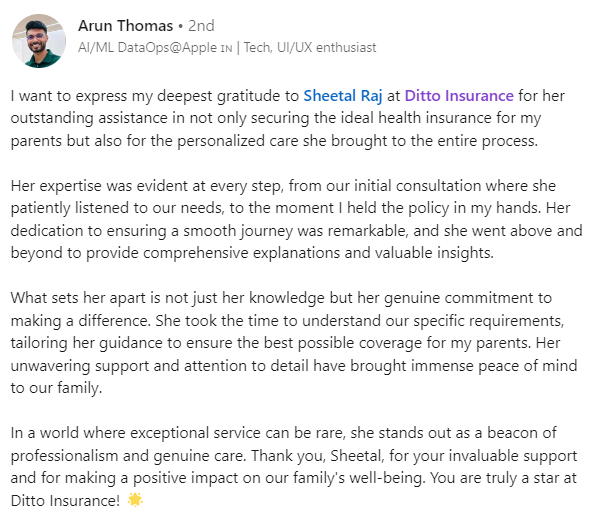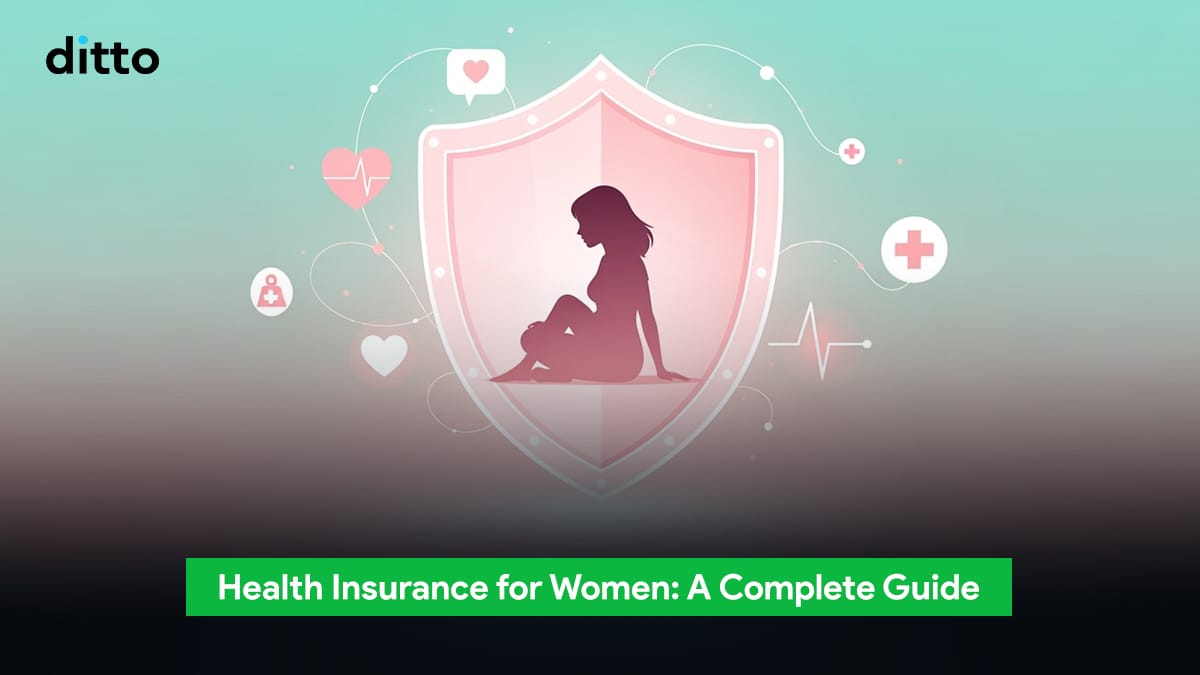| What is health insurance for women? Health insurance for women refers to a comprehensive plan, like HDFC Optima Secure, that provides broad coverage for a wide spectrum of healthcare expenses and conditions, that reduces out-of-pocket costs. It can also refer to a female-specific plan, like Star Women Care, with enhanced coverage for maternity, newborn care, female-specific illnesses, and sometimes fertility treatments (this is rare). |
We all know that life can throw curveballs, and when it comes to health, it’s even more unpredictable. For women, a strong safety net is particularly crucial because health needs evolve throughout life, from reproductive care and maternity to a higher risk of certain critical illnesses. Yet, as of 2023, only around 30% of women aged 15–49 have any form of health insurance or related financing coverage.
A TATA AIG study from March 2025 further emphasizes the gap: although women make up 47% of the insured population, over 75% are underinsured, with coverage often below ₹20 lakh which is insufficient for managing costly treatments like cancer or heart surgery.
These numbers underscore why dedicated health insurance for women is essential for financial security and better access to preventive care. In this guide, we’ll explain what to look for in a plan, and highlight some of the most popular and reliable options for women.
If you need help deciding which health insurance plan is right for you, feel free to reach out to us. Book a free call with our experts for unbiased guidance tailored to your situation.
Health Insurance Benefits for Women
Health insurance for women provides financial security and access to essential healthcare tailored to their unique needs. Key benefits include:
- Comprehensive Coverage: Protects against hospitalization costs, critical illnesses, and female-specific conditions such as breast, cervical, and ovarian cancers.
- Maternity & Newborn Care: Covers prenatal, delivery, postnatal expenses, and newborn care (often as a rider).
- Preventive Care: Supports routine screenings like mammograms, Pap tests, and gynecological check-ups for early detection.
- Financial Independence: Ensures women can access quality care without relying on personal savings or a spouse’s coverage.
- Support for Chronic & Lifestyle Conditions: Helps manage costs for osteoporosis, autoimmune diseases, hormonal changes, and mental health support.
Learn the key benefits of having health insurance and how they safeguard your health and finances.
Also check out how individual health plans work if you’re looking to secure coverage for yourself. This guide also shares the popular individual plans available in the market.
Health Insurance for Women: Ditto’s Recommendations 2025
| Before we discuss the list, here’s how we decide what plans to feature. At Ditto, every health plan goes through our six-point evaluation framework. It doesn’t mean these are the only good plans, but that they stand out after being scored across all six pillars. You can learn more about how we evaluate health insurance plans here. |
| Health Plan | Coverage Highlights (Maternity/Critical Illness/Other) | Waiting Periods |
|---|---|---|
| Star Health Women Care Insurance Plan | Maternity: Comprehensive cover, includes expenses for IVF and infertility treatments (up to limits). Critical Illness add-on: Specific female organ cancer coverage. | Maternity: Typically 1 or 2 years (varies by SI). PED: 2 years. |
| HDFC ERGO my:health Women Suraksha | Critical Illness: 41 Specific women-related critical illnesses covered (e.g., cancers, burns, paralysis). Lump-sum payout. (Not a hospitalization plan). Unique covers like, loss of job, reduced premium benefit | CI Waiting Period: Typically 90 days. PED: 3 years. |
| Niva Bupa Aspire Titanium+ | Maternity: M-iracle benefit pool covers maternity, IVF, surrogacy, adoption (up to specified limits based on SI). Overall comprehensive plan features as well. | Maternity: As low as 9 months (for Titanium+ variant, subject to SI limits). PED: 3 years. |
| Aditya Birla Activ Fit (Preferred) | Maternity: Fixed payout for Normal/C-Section delivery (e.g., ₹40k/₹60k) up to 2 deliveries. Newborn: Expenses + Vaccinations included. Other: Health Returns/Wellness benefits. | Maternity: 3 years. PED: 3 years |
Note: These women-focused plans are well-regarded and popular options in the market. However, Ditto advisors generally recommend opting for a comprehensive base health insurance plan rather than specialized plans such as maternity or critical illness alone. A comprehensive plan offers broader coverage across a wider range of healthcare needs and provides stronger and more reliable long-term protection.
Here are our top picks: HDFC ERGO Optima Secure, Care Supreme, Aditya Birla Activ One Max, SBI Super Surplus Platinum Infinite, and Niva Bupa Reassure 2.0 Platinum+ .
Also check out our guide to the best health insurance plans for families.
How to Choose the Right Health Insurance for Women?
Here are some important factors and coverage details to look for:
1. Sum Insured (Coverage Amount): Opt for adequate coverage, usually ₹15–25 lakhs, based on your age, medical history, family size, location, and preferred hospitals.
2. Maternity and Newborn Cover: check the sub-limits for both normal and C-section deliveries, as these costs can vary significantly. The waiting period for maternity benefits typically ranges from 9 months to 4 years, depending on the policy and insurer. Additionally, ensure that the plan covers the newborn baby from day one for a specified period, including essential vaccinations and coverage for any complications during the early days.
Note: Due to the high premium, long waiting period, and capped payout, maternity cover should be viewed as a planned benefit to be managed, not as the core reason for securing long-term health protection.
3. Critical Illness Cover: While health insurance covers medical treatment costs arising from critical illnesses, it may not compensate for loss of income or lifestyle adjustments during recovery. For this reason, we recommend opting for a Critical Illness (CI) cover, which can be added as a rider to your health insurance or term insurance policy.
4. Waiting Periods: This is the time before coverage applies to pre-existing conditions (2–3 years) or specific illnesses (2 years). Opt for plans with shorter PED periods or riders to reduce them.
5. No Copayment Clause, Room Rent Limit and Disease wise sublimit: Avoid plans that have: Co-payment, Room Rent Limits, and Disease-wise Sub-limits.
6. Restoration and Bonus Benefits: Look for plans that automatically restore your sum insured if it’s exhausted during the policy year, ideally with unlimited restoration for any condition, including the same illness. Most comprehensive plans also come with No Claim Bonus (increases sum insured for claim-free years) or Loyalty Bonus (granted at renewal) which can significantly boost your coverage over time.
7. Free Annual Health Check-ups: Most insurers provide a complimentary yearly health check-up within a set coverage limit, covering specific diagnostic tests at network hospitals.
8. Operational Metrics: Before buying, check how the insurer performs on key service parameters like claim settlement ratio, incurred claims ratio, ease of claim process, network hospital coverage, complaint volume, business volumes and customer support.
You can explore our in-depth guide on How to Choose the Right Health Insurance to help you make smarter, more informed decisions.
Ditto’s Take on Health Insurance for Women
We recommend focussing on a comprehensive base plan rather than a policy that’s primarily designed for maternity benefits. Women-centric plans often come with limitations like long waiting periods and strict coverage caps for maternity, all this reduces the financial value. Corporate plans may offer better maternity coverage, but it’s temporary and employment-linked. A comprehensive health insurance plan, on the other hand, provides broader, long-term protection against hospitalization, critical illnesses, and accidents.
Why Talk to Ditto for Your Health Insurance?
At Ditto, we’ve assisted over 7,00,000 customers with choosing the right insurance policy. Why customers like Tharun below love us:

✅No-Spam & No Salesmen
✅Rated 4.9/5 on Google Reviews by 15,000+ happy customers
✅Backed by Zerodha
✅Dedicated Claim Support Team
✅100% Free Consultation
Conclusion
Choosing the right health insurance for women means prioritizing long-term financial security and comprehensive coverage. Opt for sufficient Sum Insured to handle rising medical costs, understand waiting periods for maternity and pre-existing conditions, and choose a plan that includes preventive care like annual check-ups. Consider useful riders such as critical illness, personal accident, or OPD coverage, and check for a wide cashless hospital network to make accessing care easier and worry-free.
If you need help deciding which health insurance plan is right for you, feel free to reach out to us. Book a free call with our experts for unbiased guidance tailored to your situation.
FAQs
Can single or unmarried women get women’s health insurance?
Yes, they can. Health insurance for women isn't just about maternity. Almost all comprehensive plans offer coverage for several health issues (like PCOS/PCOD, endometriosis), critical illnesses (breast cancer, cervical cancer, and ovarian cancer), and preventive health check-ups.
Is maternity coverage included in women’s health insurance plans?
Maternity cover is often included as an in-built feature in dedicated health insurance for women policies, or as an optional add-on/rider in a standard policy. It's rarely a standard inclusion and it always requires a waiting period.
What are the waiting periods in women’s health insurance?
The common waiting periods in health insurance for women are:
- Initial Waiting Period: 30 days for all illnesses (except accidents).
- Maternity Waiting Period: 9 months to 4 years.
- Pre-Existing Disease (PED) Waiting Period: upto 3 years.
- Specific Illness Waiting Period: 2 years
Which is the best age to buy women’s health insurance?
The best age to get health insurance for women is as early as possible, ideally in your mid-20s to early 30s. This is because:
- The premium is the lowest.
- You lock in coverage before any pre-existing conditions develop.
- You complete the mandatory waiting and moratorium periods while you are still young and healthy.
What are the most useful add-ons or riders in women’s health insurance?
Key add-ons/riders for health insurance for women can be:
- OPD Rider: Provides coverage for outpatient expenses such as doctor consultations, diagnostic tests, and medications without requiring hospitalization.
- Waiver of Waiting Period: Reduces the waiting period for certain conditions.
- Consumables Cover: Pays for non-medical items like gloves, syringes, etc.
Are there tax benefits for women’s health insurance?
Yes, health insurance for women offers tax benefits under Section 80D of the Income Tax Act, 1961 (applicable if you opt for the old tax regime). You can claim a deduction of up to ₹25,000 annually for yourself (₹50,000 if you are above 60), and your family, and up to ₹50,000 if you pay premiums for senior citizen parents.
Last updated on:








